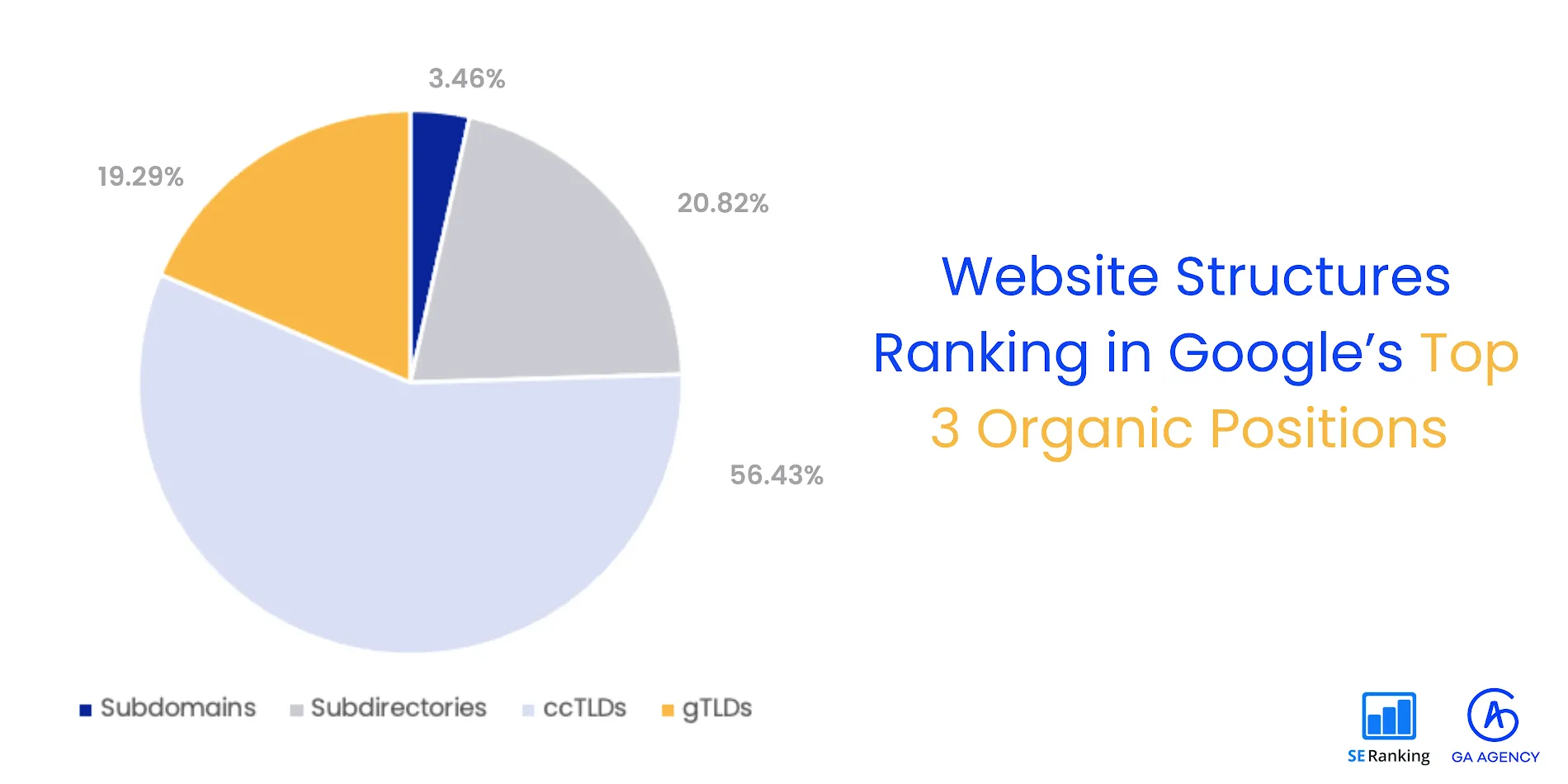- 56% of the top three positions are held by ccTLDs, making them the most prevalent website structure globally.
- Subdirectories are the second most prevalent website structure in the top three positions, appearing in over 20% of Google’s top positions.
- Subdomains account for just 3% of domain structures in SERPs but are prevalent in top positions in multilingual markets.
GA Agency conducted a study on domain structures for international SEO, revealing insights into how Google's algorithm responds to various domains. The study found that 56% of the top three positions on Google are held by ccTLDs, making them the most prevalent domain structures. However, ccTLDs can be costly and challenging to manage, so consider them only if essential for your website.
Additionally, the study found a correlation between ccTLDs and gTLDs. gTLDs without market-specific subdomains correlate with ccTLDs in positions 0 to 1. This conclusion might be a bit broad. It could be more accurate to say that Google's favoring of specific websites varies based on factors like domain structure.
Subdirectories are the second most common website structure in Google's top three positions, appearing about 20% of the time and accounting for 20% of all SERP positions.
Evidently, ccTLDs hold significant sway in Google's top rankings, emphasizing their relevance in international SEO. Yet, a balanced strategy, weighing practicality and cost alongside search engine favorability, is paramount. Aligning your domain structure with broader SEO objectives is pivotal for enduring success in today's dynamic digital landscape.
Read next: CMO Survey Reveals Generative AI Boosts Marketing Sales and Customer Satisfaction



